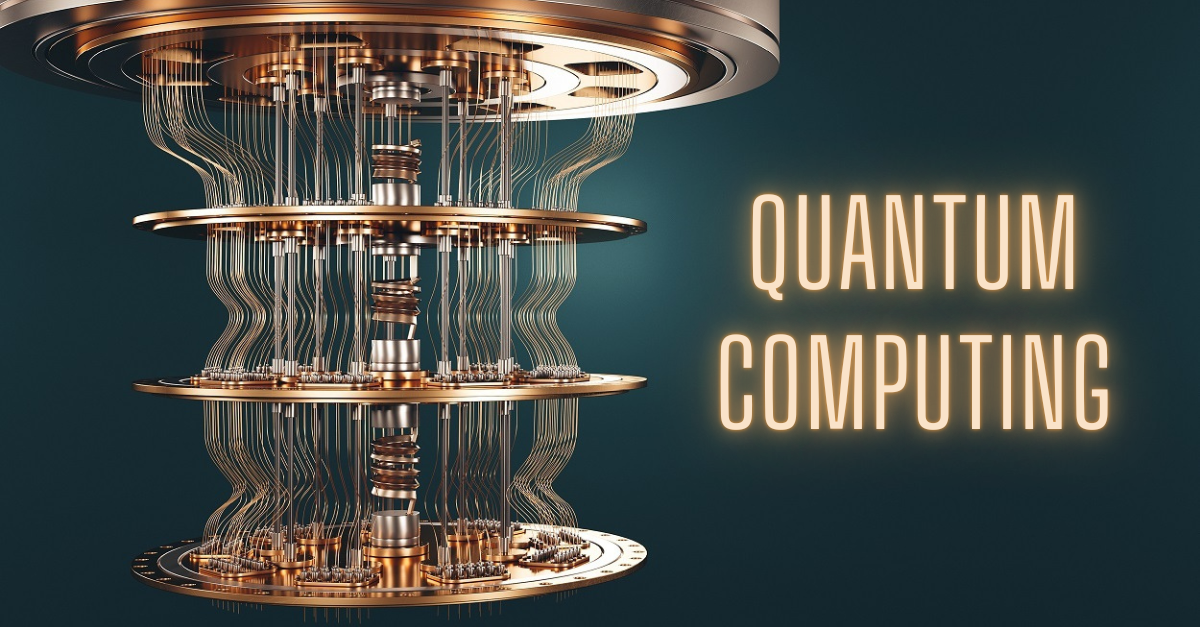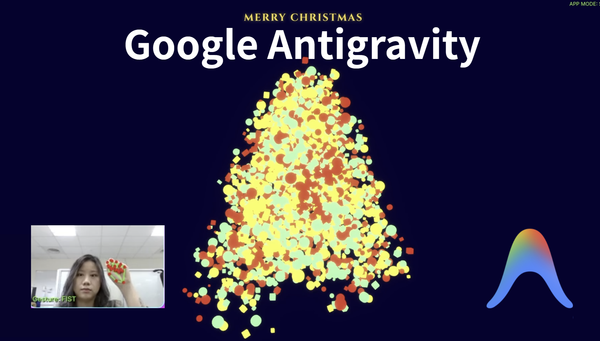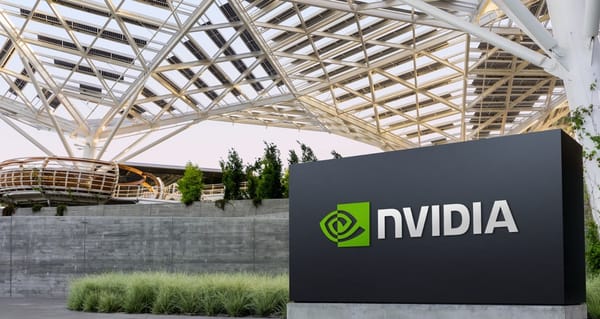【科技新知】從薛丁格的貓到奇異博士的多重宇宙——「量子電腦」正引爆下一場科技革命
從愛因斯坦的「鬼魅作用」與薛丁格的貓,到奇異博士的宇宙穿梭,量子運算正從理論走向產業實踐。AWS、Google、NVIDIA、Microsoft 正以晶片、平台與演算法全面佈局,掀起超越摩爾定律的下一場科技革命。

當奇異博士遇上愛因斯坦:多重宇宙,其實是量子邏輯
「如果一隻貓可以同時活著又死了,那我們是不是也同時存在於多個宇宙?」
這句聽起來像是科幻電影《奇異博士》的橋段,其實正是量子物理的核心邏輯:疊加(superposition)與糾纏(entanglement)。
儘管愛因斯坦曾譏諷這種「鬼魅般的遠距作用」,如今卻成為量子電腦革命的根基,也正在顛覆人類對真實與邏輯的定義。當傳統電腦還在處理 0 和 1 的開關組合,量子位元(qubit)已經能「同時是 0 又是 1」,大幅提升計算潛能,跨越經典邏輯的邊界。
一場從薛丁格的貓開始的科技革命
量子世界之所以令人驚奇,是因為它與直覺完全相反:
- 疊加態:一個 qubit 能同時處於 0 與 1 的狀態
- 糾纏態:即使相隔千里,兩個 qubit 也能瞬時影響彼此
- 坍縮機制:一旦觀測,其量子態即瞬間定向,無法逆轉
但這種神奇的現象極其脆弱:qubit 僅能在接近絕對零度的環境下維持短暫穩定,且易受到外界干擾而產生錯誤。因此,量子錯誤修正(Quantum Error Correction, QEC)成為量子電腦能否實用化的關鍵瓶頸。
四大科技巨頭的量子軍備競賽
當量子電腦從理論邁向實用,AWS、Google、Microsoft、NVIDIA 四強紛紛展開量子佈局:
- AWS
與加州理工共同開發「Ocelot」晶片,採用「貓態 qubit」,具備內建錯誤矯正機制,能大幅減少量子錯誤修正(QEC)所需資源。並透過 Braket 平台,支援混合雲端模擬與量子實機試驗。 - Google
2019 年以 53 qubit 的 Sycamore 處理器達成「量子霸權」;目前正研發 Willow 晶片,預計用於生成經典電腦無法模擬的 AI 訓練資料。 - Microsoft
發表 Majorana 1,聲稱以拓撲量子態實現天然容錯 qubit,未來計畫擴展至百萬級 qubit 的晶片架構。 - NVIDIA
在波士頓設立量子研究實驗室,致力整合 GPU 與量子處理器(QPU),打造 QPU+GPU 混合運算架構,支援生成式 AI 與大型模擬系統。
這場量子科技的軍備競賽,不只是追求運算速度的極限,更關乎搶佔 AI 訓練、醫療模擬、密碼安全 等未來關鍵應用領域的技術主導權。
Shor、Grover──數學與量子魔法的交會
量子電腦真正的革命,來自於它能執行經典電腦辦不到的演算法:
- Shor’s Algorithm:可在多項式時間內分解大質數,等於能破解現今主流的 RSA 與 ECC 公鑰系統,是資訊安全的「末日倒數」。
- Grover’s Algorithm:可將搜尋時間從 O(n) 加速為 O(√n),對資料庫查詢與密碼學帶來指數級優勢。
然而,這些強大能力的背後,建立在極度脆弱的量子相干性之上。沒有高效率的錯誤修正,就無法擴展 qubit 數量,也難以實際落地。
後量子時代──AI 新文明的曙光
隨著 Shor 演算法潛在的安全風險浮現,全球開始準備「後量子時代」:
- NIST 已制定四大後量子加密標準(CRYSTALS-Kyber、FALCON、Dilithium、SPHINCS+),預計 2025 年正式取代 RSA。
- AI+量子運算 結合可產生物理精準模擬數據,從藥物設計、氣候模型到材料開發,讓 AI 學習不再靠近似,而是靠物理真實。
- 量子晶片與 GPU 混合架構 將讓大型 AI 模型訓練與運算更加高效,甚至誕生全新型態的智慧系統。
未來的運算,不再只是更快的電腦,而是以機率為邏輯的宇宙模型。當我們能掌握「一隻同時死活的貓」,人類的科技文明,將從矽晶片,進入量子機率的新時代。
量子運算不只是一場硬體創新,更是對「邏輯與真實」的重新定義。從多重宇宙的哲學假設,到 AI 與安全演算法的實際應用,量子電腦正帶來一場前所未有的文明轉向。而這場轉向,才剛剛開始。
From Schrödinger’s Cat to Doctor Strange’s Multiverse: Quantum Computers Are About to Blow Up Reality
When Doctor Strange Meets Einstein: The Multiverse Is Just Quantum Logic
How quantum computing is rewriting the rules of logic, reality, and AI
"If a cat can be both alive and dead at the same time, does that mean we, too, exist across multiple universes?"
This may sound like a line from a Marvel movie, but it reflects one of quantum physics’ most mind-bending concepts: superposition and entanglement.
Though Einstein once dismissed it as "spooky action at a distance," this very logic now underpins the rise of quantum computing—and it’s reshaping our understanding of reality, logic, and the future of computation. While classical computers toggle between 0s and 1s, quantum bits (qubits) can be both at once—unleashing a level of parallelism that breaks through the limits of traditional binary logic.
A Scientific Revolution Sparked by Schrödinger’s Cat
The quantum world defies common sense. It operates by principles that feel more magical than mechanical:
- Superposition: A qubit can exist in both 0 and 1 states at the same time.
- Entanglement: Two qubits, even separated by vast distances, can instantaneously affect each other.
- Collapse: Once measured, a qubit’s fuzzy state "collapses" into a definite outcome and cannot be reversed.
But these astonishing properties are incredibly fragile. Qubits only remain stable for a few microseconds under ultra-cold conditions near absolute zero and are highly sensitive to noise. That’s why quantum error correction (QEC) has become the central challenge for scalable, reliable quantum computing.
The Quantum Arms Race: AWS, Google, Microsoft, NVIDIA
As quantum technology moves from theory to practice, the tech giants are racing to define its future:
- AWS
- Partnered with Caltech to develop the Ocelot chip using "cat-state qubits".
- Features built-in quantum error correction, reducing QEC overhead by approximately 90%.
- Provides access to hybrid simulations via the Braket cloud platform.
- Google
- Achieved quantum supremacy in 2019 with Sycamore (53 qubits), completing a task in 200 seconds that would take classical supercomputers 10,000 years.
- Currently developing Willow, aimed at generating AI training data beyond classical simulation capabilities.
- Microsoft
- Introduced Majorana 1, utilizing topological qubits for inherent fault tolerance.
- Plans to scale up to millions of qubits on a single chip in the future.
- NVIDIA
- Established a quantum research lab in Boston.
- Working to integrate Quantum Processing Units (QPUs) with GPUs.
- Aims to build hybrid QPU+GPU systems for generative AI and large-scale simulation workloads.
This quantum race goes far beyond hardware—it's a fight to shape the future of AI, cryptography, drug discovery, and more.
When Math Meets Quantum Magic: Shor and Grover
Quantum computers matter not just because they’re new, but because they can run algorithms that classical computers simply can’t.
- Shor’s Algorithm: Can factor large numbers in polynomial time, theoretically breaking RSA and ECC encryption—triggering what some call the “crypto countdown.”
- Grover’s Algorithm: Speeds up search problems from O(n) to O(√n), offering dramatic gains in database queries and cryptography.
However, both rely on quantum coherence, which is extremely fragile. Without robust quantum error correction, scaling up qubits leads to exponential increases in error rates—one of the biggest barriers to real-world deployment.
Post-Quantum Era: The Dawn of an AI-Quantum Civilization
With Shor’s algorithm threatening today’s encryption, the world is already preparing for the post-quantum era:
- The U.S. National Institute of Standards and Technology (NIST) has finalized four post-quantum cryptography standards—CRYSTALS-Kyber, FALCON, Dilithium, and SPHINCS+—to replace RSA and ECC. These are expected to be adopted officially by late 2025.
- Quantum + AI is set to redefine scientific modeling. From drug design to climate simulations, quantum-generated data could be more physically accurate than ever, giving AI models deeper realism and learning fidelity.
- Hybrid architectures—combining QPUs and GPUs—will accelerate the training of next-gen AI models and enable previously impossible simulations.
In the near future, computation won’t just be faster—it will be probabilistic, operating according to the laws of quantum mechanics. Once we tame the cat that’s both alive and dead, our civilization will leap from silicon logic to quantum probability.
Quantum computing isn’t just a hardware upgrade—it’s a philosophical shift.
From multiverse theories to cybersecurity, from AI to the very nature of observation and truth, quantum computing is ushering in a transformation unlike anything we've seen.
And this revolution? It’s only just beginning.
image by: Bartlomiej K. Wroblewski on Shutterstock
reference: CNBC, 3Blue1Brown




